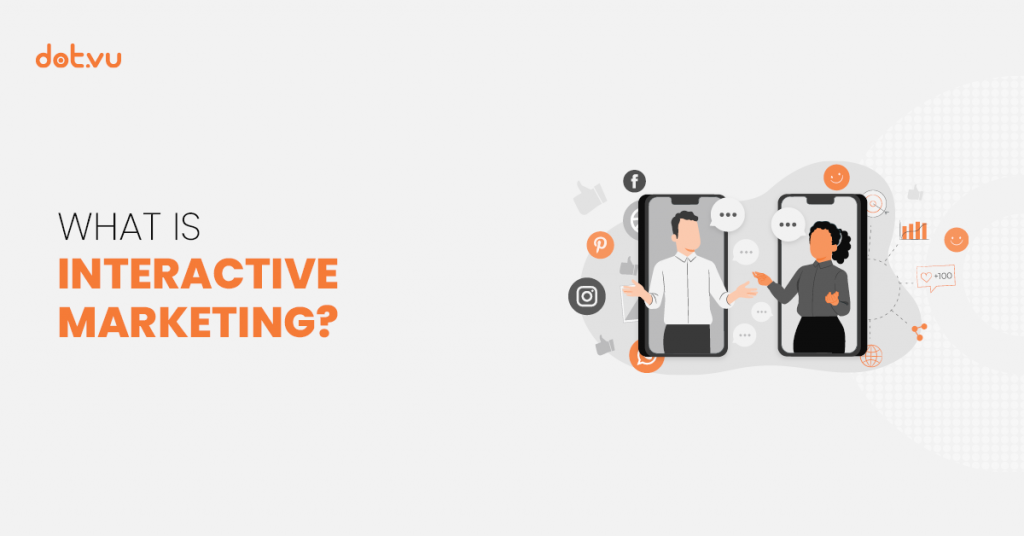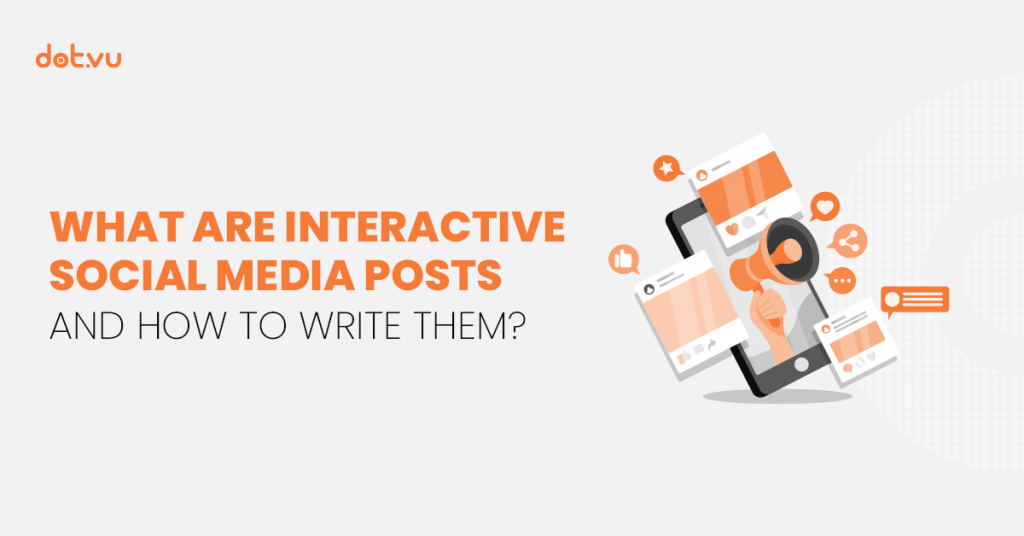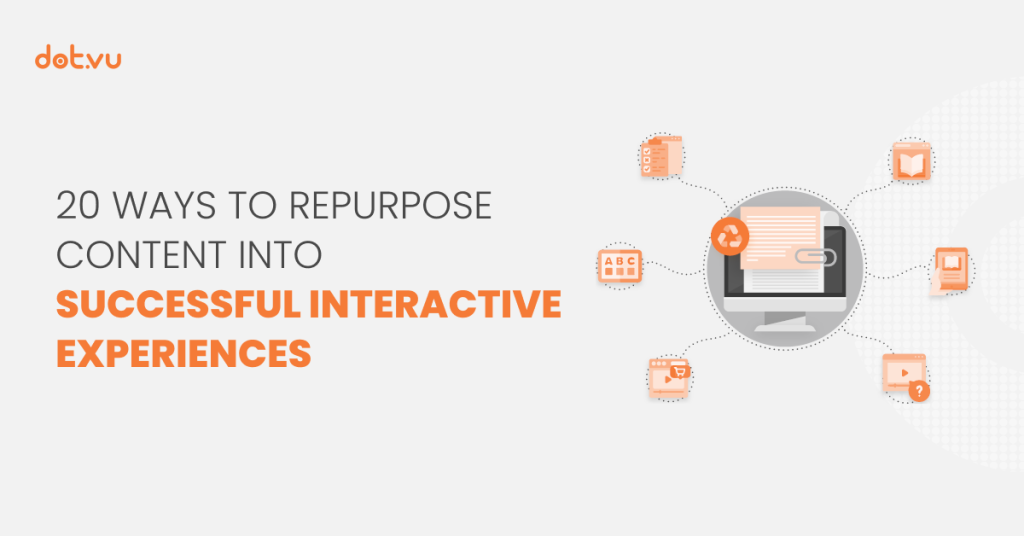
Before we get started talking about how you can use Interactive Content to successfully repurpose content into Interactive Experiences. Let’s reflect a bit on the current content you are creating.
As a marketer, chances are that you are writing, editing, and developing lots and lots of content; SoMe posts, blog posts, podcasts, videos, web copies, Interactive Flipbooks, and so on. We rarely think about it, but lots of work is involved in creating amazing content pieces. Time. Money. Planning. Creativity. Strategy. Research. Many different creators. Different software and tools. Editing. And the list goes on and on.
But, how long does this content last?
Your content’s lifespan might be surprising and encourage you to repurpose content into Interactive Experiences. A TikTok video for example only lasts for a few minutes. An Instagram post…21 – 48 hours. Facebook? 5 hours! A YouTube video lasts a bit longer with a life span of 30+ days. One of the best content to create is blog posts because they have a duration of 2+ years.
It’s difficult to estimate the lifetime of bigger pieces of content such as online magazines, PDFs, eBooks, and so on. Because some are written with the idea of creating evergreen pieces, while others are very time-bound. But, no matter what, trends change, examples get outdated, new ideas come up, mistakes are found, etc. So, even when wishing for the best, they are rarely evergreen. But, when you spend hours working on content that will rapidly depreciate, you might be wondering how you can Recycle. Reuse. Repurpose that content.
In this blog post, we will tell you why we think Interactive Content is the way to repurpose content and we’ll give you 20 examples of how you can transform common content forms into Interactive Experiences.
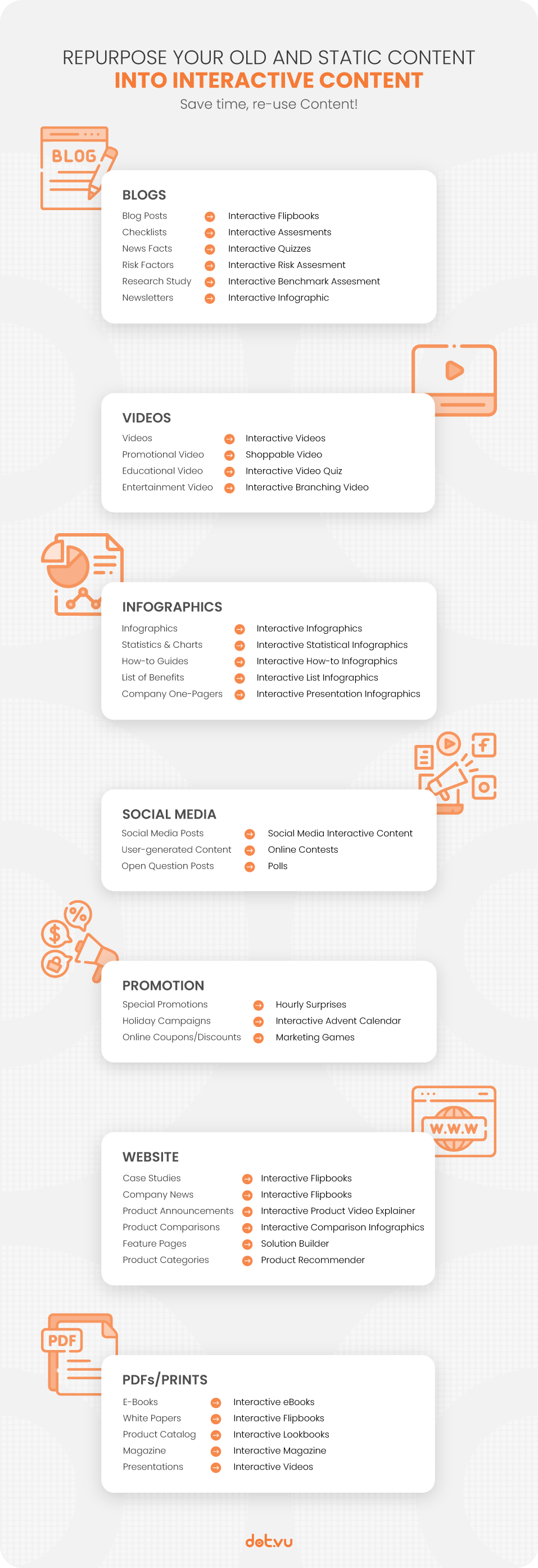
What is Repurposing Content?
The practice of repurposing content, also known as content recycling, involves creating a new content piece by reusing parts of an existing content piece into a new format.
For example, you wrote an amazing blog post. But, you don’t get lots of traffic on it because of XYZ. However, you know for a fact that your target audience would find that piece of content insightful. You know, if they got to see it, they’d like it. But facts are, you don’t get lots of traffic on your blog.
So, you think about repurposing this blog post into a short video that you’d share on social media. It’d be easy. You have already done most of the work. The actual content that you’ll present in the video has already been researched, analyzed, processed, and your thoughts on the subject are aligned. In other words, you’d be a few steps ahead in your video creation process. Then, from the video, you could encourage people who want to learn more about the topic in your blog post to read your initial blog post. Hence, hopefully succeeding in getting your blog post gets the attention it deserves.
Why is it important to repurpose content?
There are many reasons why one would consider the idea of repurposing content. Let’s mention the fourth most common ones below.
- Saving time: As we mentioned, you’d use parts of a content piece you already created; therefore, you can save lots of time.
- Increase life duration: By recycling content into content types with longer longevity, such as Interactive Experience, you boost the lifespan of your content efforts.
- Reach a diverse audience: Some people prefer to read blog posts, others prefer to watch videos, and some listen to podcasts. By using different types of content, you increase your reach.
- Give an SEO boost: by having different types of content with the same keywords, search engines such as Google can see you as an expert on the subject. Hence, recognizing you as a source of authority.
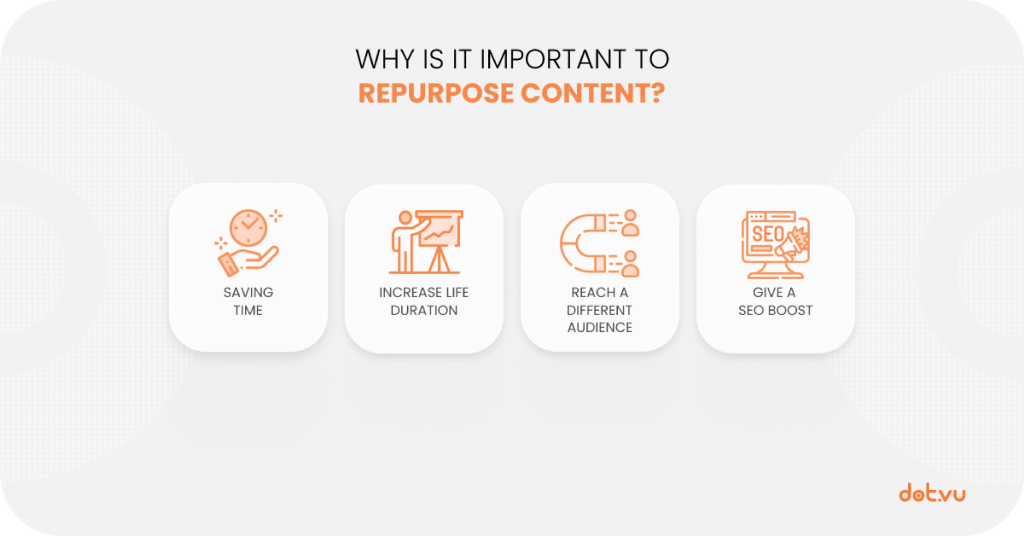
Why repurpose content into Interactive Content?
While lots and lots of marketers are already using the technique of repurposing content, they generally do so using the most common content types: blog posts, videos, podcasts, and infographics. While this technique does work, there is an even better way – repurpose content into Interactive Content!
What is Interactive Content? It is a type of content where the audience plays a central and active role in the experience. In other words, rather than passively consuming a piece of content, the audience interacts with it by answering questions in a quiz, choosing their own journey in a video, collecting points in a game, and so on.
The goal of Interactive Content is to create personalized and memorable experiences for the viewers, and that’s why lots of companies are adding Interactive Content to their marketing strategies. So, when thinking about your repurpose content strategy, consider recycling your content into Interactive Experiences such as Quizzes, Guided Selling experiences, Interactive Videos, and so on.
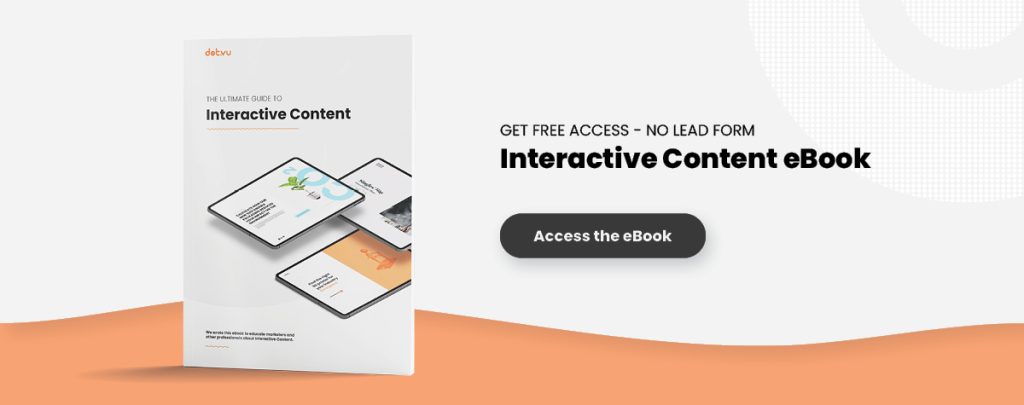
The Benefits of repurposing content into Interactive Experiences
- Better control over the content you create: When you share an image, an infographic, a PDF, a video file, and so on, you lose control over it. You don’t know how they are being used, modified, shared, etc. By repurposing your content into Interactive Content, you gain back that power because you’ll be hosting your Interactive Experiences live on your website.
- Improve User Experience: Interactive Experiences are known to improve the user experience of online users. Therefore, by repurposing your content into Interactive Content you succeed in boosting the user experience of your audience.
- Increase Engagement: Interactive Content creates a two-way exchange between your company and your audience, thus increasing engagement like no other type of content!
- Generate Qualified Leads: Many popular types of content, such as blog posts, Youtube Videos, SoMe posts, etc., don’t directly encourage buyers to continue further down the Sales Funnels. Most types of Interactive Content do.
- Boost Sales: Many types of Interactive Content are known to succeed in boosting sales way better than traditional content. For example, Guided Selling experiences and Shopping Videos are great ways to boost sales.
- Collect valuable data: When you create an infographic or a PDF, there isn’t much way for you to calculate the ROI and collect valuable data insights. But, if you would repurpose your infographics into Interactive Infographics and your PDFs into Interactive Flipbooks, you’d be able to track all the KPIs you’d want!
- Differentiate your content from competitors: If you are thinking about putting marketing efforts into repurposing your content, then you should get away from regular content types and dive into interactivity. That’s how you will succeed in differentiating your content from competitors.
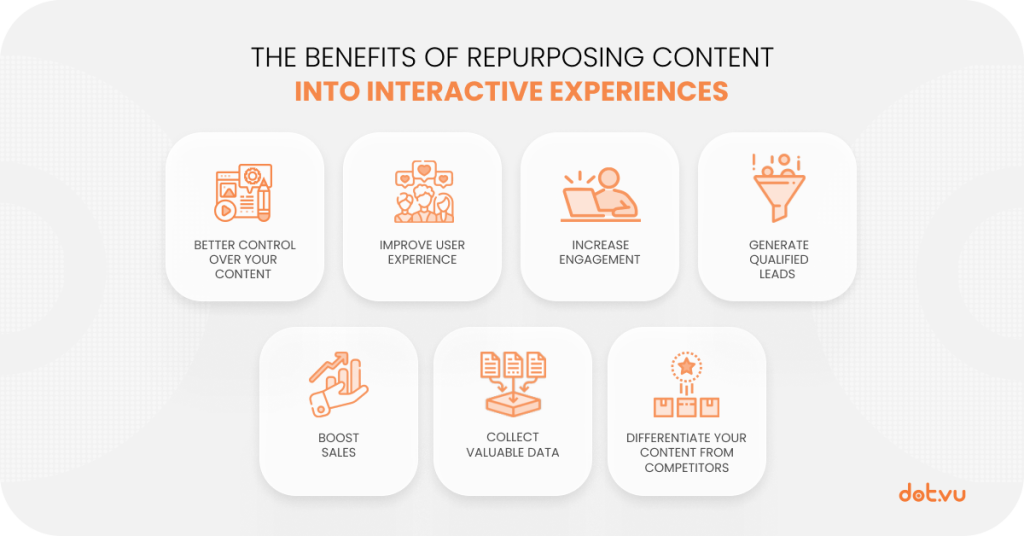
20 ways to repurpose Content into Interactive Experiences
Below we will discuss how you can transform popular content types into Interactive Experiences. We have separated the examples into 7 different sections:
- Repurpose Blog Content
- Repurpose Video Content
- Repurpose Infographic Content
- Repurpose Social Media Content
- Repurpose Promotional Content
- Repurpose Website Content
- Repurpose PDFs Content
Repurpose Blog Content
Repurposing blog content is a strategy often used because it is relatively straightforward. You did all the background work, and you simply used the text in a new format. We often see companies repurpose blog content into SoMe posts, videos, and podcasts. But let’s discuss how we can repurpose blog content into Interactive Content.
1. Blog Post → Interactive Flipbooks
One of your blog posts is working very well, you get lots of traffic from it, so you are wondering how you can transform that traffic into leads. An idea could be to reuse the content of this blog post in an Interactive Flipbook.
In your Interactive Flipbook, you can copy and paste most of the content from your blog post. Moreover, you can add quizzes, polls, and gated sections. Having gated sections is a wonderful way of getting new leads.

2. Blog post→ Interactive Video
Another way to repurpose blog content could be to transform a blog post into an Interactive Video.
What is an Interactive Video? For example, if you have a “How to” blog post, such as a food recipe, you could create an Interactive Video where viewers decide on certain things such as flavors, main ingredients, and so on. Depending on their answer, they will see a personalized video where a chef shows them how to complete their newly built recipe.
Callebaut, a Belgian chocolate brand, used an Interactive Video to build awareness around their new Chocolate Confectionery – The Chookie. In the video, viewers could decide the type of chocolate used for the shell, the type of filling, and the type of cookie to be used as the base. Then, a chef from Callebaut would show them how to assemble their personalized Chookie. Ultimately, viewers could receive their personalized recipe via email by answering the lead form.
In other words, instead of simply having a blog post with the recipe of their new product, Callebaut creates an entire experience around it. Hence, succeeding in getting lots of new leads they wouldn’t have gotten otherwise.
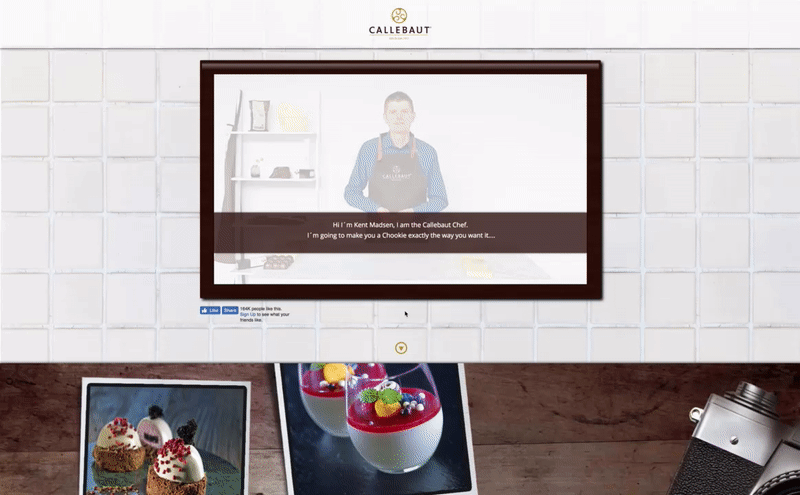
3. Blog Post→ Interactive Infographics
A very nice and well-known way to repurpose blog content is to create Infographics. However, why stop at simple (and very mainstream) infographics when you can easily design Interactive Infographics?
What is an Interactive Infographic? It is similar to a regular infographic, the main difference is that they are much more engaging because they contain interactive elements such as hotspots, polls, surveys, quizzes, Interactive Videos, animations, and more.
Let’s exemplify this idea. Let’s say you created a blog post on the development of a specific technology throughout the years. A great way to repurpose your blog content and make it more interactive and visually engaging would be to create an Interactive Timeline Infographic with that blog post. Experience such an Infographic by clicking on the image below.
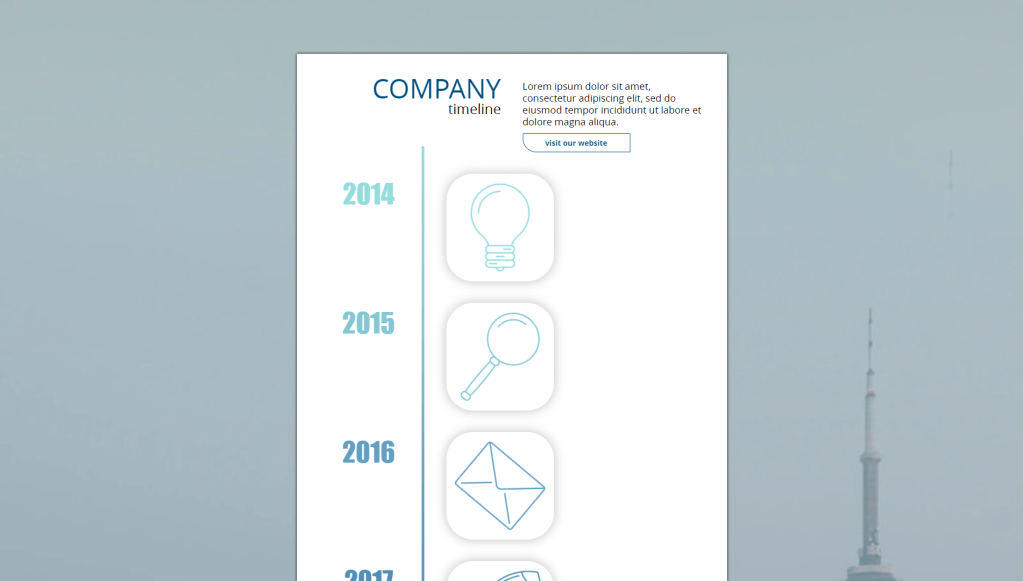
Repurpose Video Content
Did you know that in 2022, online videos are supposed to be more than 82% of all consumer internet traffic? So, you might wonder why you should repurpose video content into another type of content since videos are already an awesome and preferred type.
But, why would you do the same as everyone else? How will you distinguish yourself from competitors if you, yet again, create another video on the exact same topic? How about you repurpose video content into Interactive Content, more precisely Interactive Videos, instead? That would certainly be easily feasible and give you the edge you are looking for.
4. Promotional Video → Shoppable Video
A great way to repurpose video content would be to transform your promotional videos into Shoppable Videos. What are Shoppable Videos? A Shoppable Video, also known as a ‘touchable video’ or a ‘clickable video’, is a video that allows viewers to click on products to learn more about them and directly from within the video to add items to their eCommerce basket.
So, instead of simply promoting your new products or services in your video, you now allow viewers to shop directly within them. So, you transform your linear video into an Interactive Experience that connects the different stages of the buyer’s journey.
Related: How to create a killer Shoppable Video
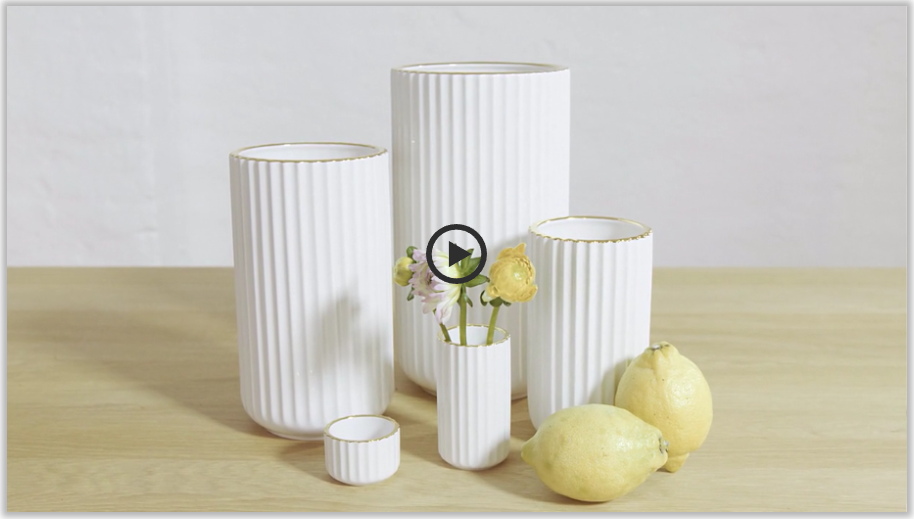
5. Educational Videos → Interactive Video Quiz
Sometimes, the goal of your video is not to promote your product offering but rather to educate your audience on a specific topic. In this case, repurposing your video into a Shoppable Video would not be the best option. But, you might be interested in repurposing your video into an Interactive Video Quiz.
An Interactive Video Quiz, as explained in the name, is a traditional video that includes a live quiz. There are different ways of designing this type of Interactive Video. For example, you could have questions spread out throughout the videos, or the entire quiz could be at the end of the video.
In any case, repurposing video content into an Interactive Video Quiz is a great way to boost engagement and increase information retention.
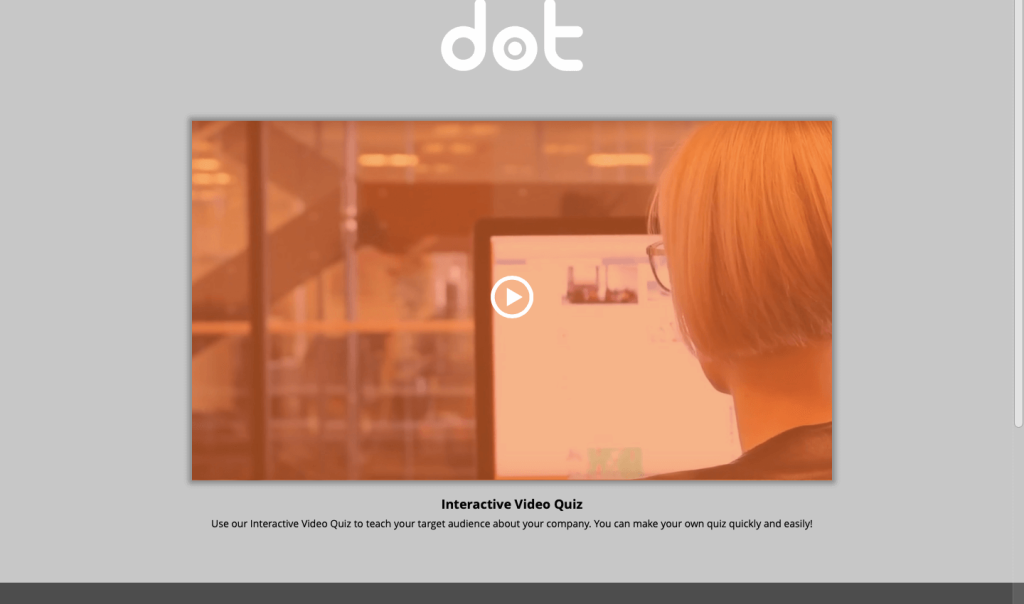
6. Entertainment Videos → Branching Video
Finally, while some videos are made to promote your products or educate your audience on a specific topic, others are created simply to entertain viewers. We call these entertainment videos. How do you repurpose content included in Entertainment Videos? An idea could be to transform them into Branching Videos.
What is a Branching Video? A Branching Video is a type of Interactive Video where viewers are asked to participate actively in the narrative by choosing between different actions or storylines. In other words, the viewers create their own narratives rather than watching passively.
By letting viewers choose “What happens next” in the video, viewers become more engaged within the experience. Therefore, you can succeed in grabbing and keeping your audience’s attention better.

Repurpose Infographic Content
Similar to how you’d repurpose video content into Interactive Videos, it is possible (and desirable) to repurpose Infographic content into Interactive Infographics.
What is an Interactive Infographic? An Interactive Infographic is similar to a regular infographic, the main difference is that they are much more engaging because they contain interactive elements such as hotspots, polls, surveys, quizzes, Interactive Videos, animations, and more. Therefore, as with any other type of interactive content, instead of passively reading the infographic, the viewers can actively engage with it through the interactive elements.
Moreover, once a regular infographic is published, it’s not easily modifiable. Plus, you don’t control how it’s used, shared, or copied. However, if you create an Interactive Infographic, it’s live, on your domain. Therefore, you can always make modifications. In addition, you can better track its results.
7. How-to Infographics → Interactive How-to Infographics
How-to Infographics are often used by marketers because they can help you visually explain a concept, step by step, so that it’s easy to understand in a minimal amount of time.
By adding a layer of interactivity to your “How-to” infographics, you can succeed in making them way more engaging with clickable buttons, nice animations, and even by adding videos directly embedded into them. Moreover, you can add ways of collecting new leads by having, for example, a gated quiz, a gated Marketing Game, or a gated link to an eBook directly at the end of your Interactive “How-to” Infographics.
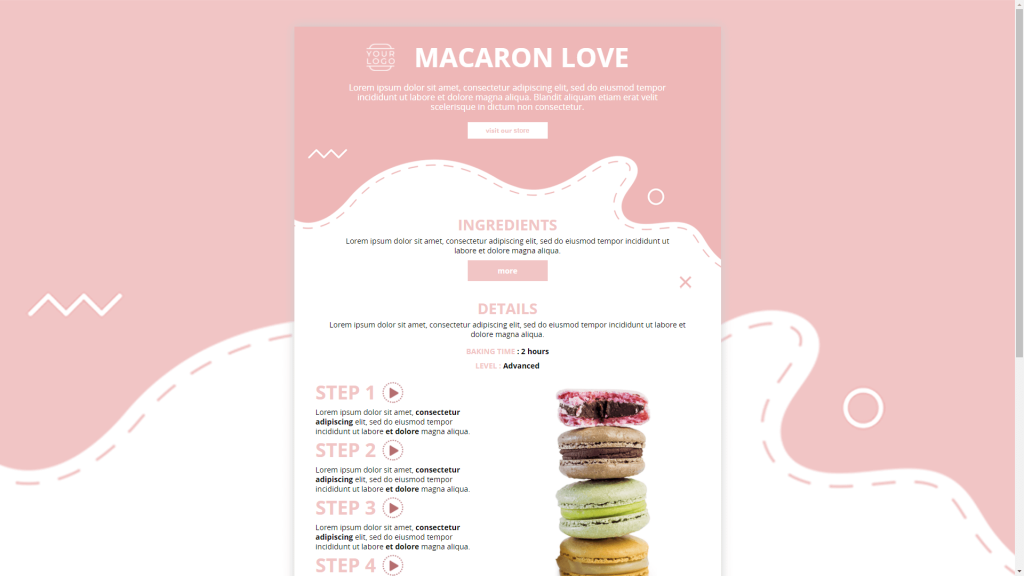
8. List Infographics → Interactive List Infographics
Much like “How-to” infographics, you can repurpose list infographics content into Interactive Infographics. Let’s discuss a bit the idea of adding interactive elements to List Infographics.
With an Interactive List Infographic, you could add drop-down buttons, where viewers could find more content such as steps, recommended products, and so on, without crowding the design. Moreover, you could have buttons that bring viewers directly to the page where they can buy the items they are considering. Finally, you could also embed other Interactive Experiences, such as a Marketing Game, directly into the infographic to engage viewers even more.
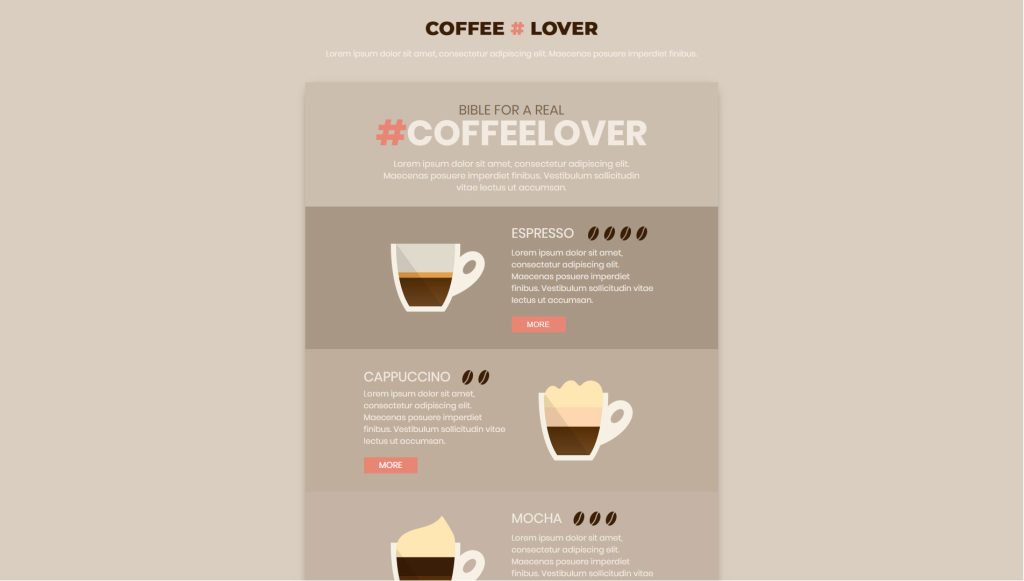
9. Comparison Infographic → Interactive Comparison Infographics
Comparison Infographics are often used by companies to compare two similar products. Sometimes, they compare two products they sell to help clients make a better choice. Other times, they compare their product with their competitors to highlight their competitive advantage.
In any case, a company would benefit a lot from making this type of Infographics interactive because most of the time these infographics are heavy with useful information. By making them interactive, we can succeed in keeping the design clean and neat without cutting on useful must-know. Drop-down buttons, animations, embedded videos, links, and so on are tools that are available for you when repurposing Infographic content into Interactive Infographics.
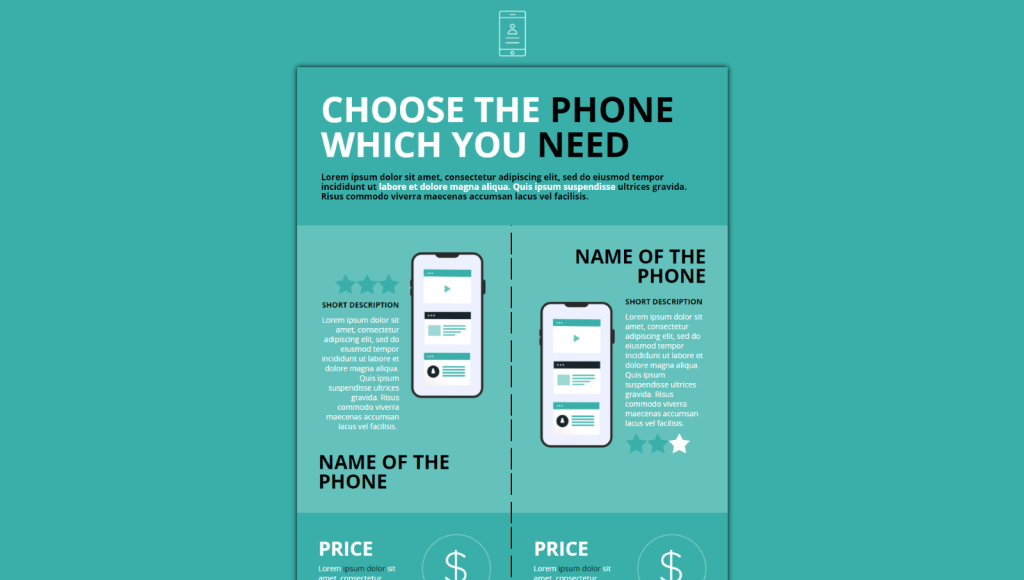
Repurpose Social Media Content
Repurposing Social Media Content can appear easy. Most of the time, companies simply reshare the same posts on other social media platforms, or even on the platform after a couple of months. That might work with posts that are already generating lots of traffic, but what if there was a better way? What if I told you, you could repurpose Social Media Content into Interactive Social Media posts?
What are Interactive Social Media posts? Interactive Social Media posts are posts that focus on interactivity and engagement first, content second. They follow the same principles as any other type of Interactive Content. In other words, Interactive Social Media posts are posts that are shared with the intention of encouraging a specific interaction from viewers. And, by interaction, we mean more than a simple click on the like button. We mean actions such as answering a poll question or participating in a contest.
10. Holiday posts → Link to Marketing Games
Every holiday, companies around the world create cheesy posts to wish their followers “Happy Valentine’s Day”, “Merry Christmas”, and so on. But, that doesn’t bring any value to your followers.
So, instead of only sharing your greetings, you could add a link to a fun Interactive Experience such as a Marketing Game where users could win something (e.g, a discount code, free delivery, etc.).
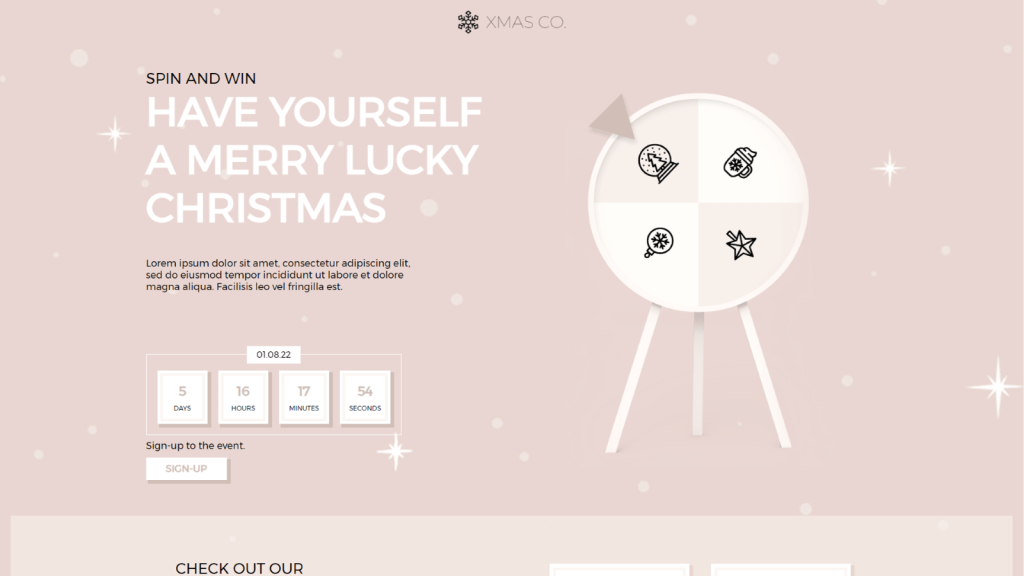
11. User-Generated Content → Online Contests
User-Generated Content is content created by customers and published on social media about a specific brand. It is a very valuable type of content because it is often perceived as word-of-mouth, which means that it is considered a recommendation. Plus, it plays on the mere exposure effect.
There are ways of repurposing User-Generated Content to increase the lifespan of these posts. An idea could be to create a contest where people need to vote for the best User-Generated Content. Doing so would bring lots of new users to your website, plus it would most likely help you get even more User-Generated Content.
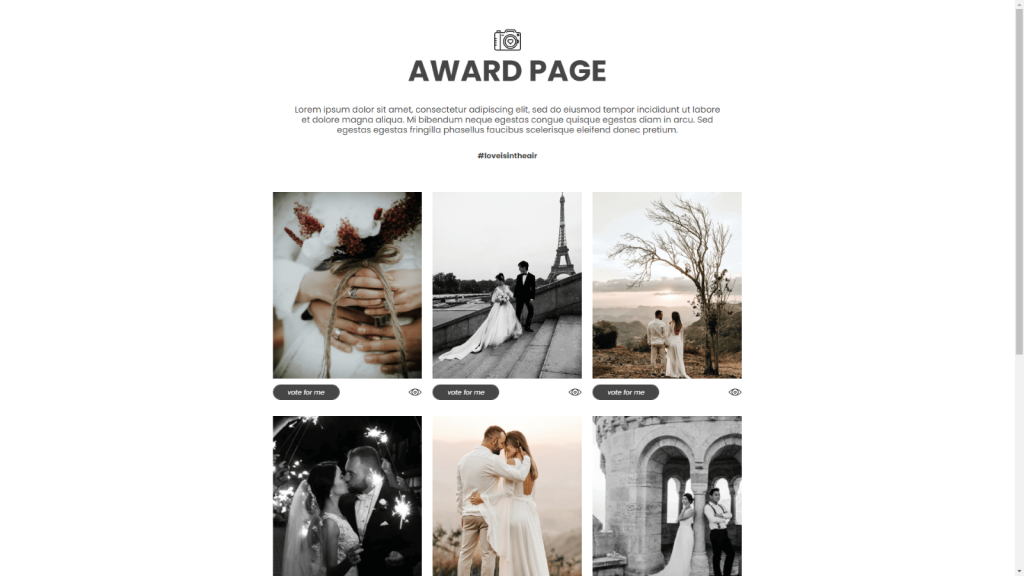
12. Open Question Posts → Polls
Another very simple idea to repurpose Social Media content would be to find all the open question posts you created that worked relatively well in the previous years. Then, create polls with these questions instead. Later, publish new posts with the results and your thoughts on them.
While this is a very simple idea, it might be great to get lots of engagement and impressions.

Repurpose Promotional Content
Throughout the year, chances are that you are running a lot of promotional content such as Google ad campaigns, daily, weekly and monthly discounts, online coupons, promo codes, and so on.
You can repurpose promotional content into Interactive Experiences quite easily. Start by looking at which promotions worked best, and then gamify them to boost engagement.
13. Special Promotions → Hourly Surprises
If you have special promotions for Black Friday, Cyber Monday, or Halloween, instead of simply showing all your discounts on your websites, you could create an Hourly Surprises experience.
For example, on Black Friday, you could have different promotions throughout the day that customers could unveil at different hours. This would help you engage users, boost sales and make sure they return to your website a couple of times during the day.
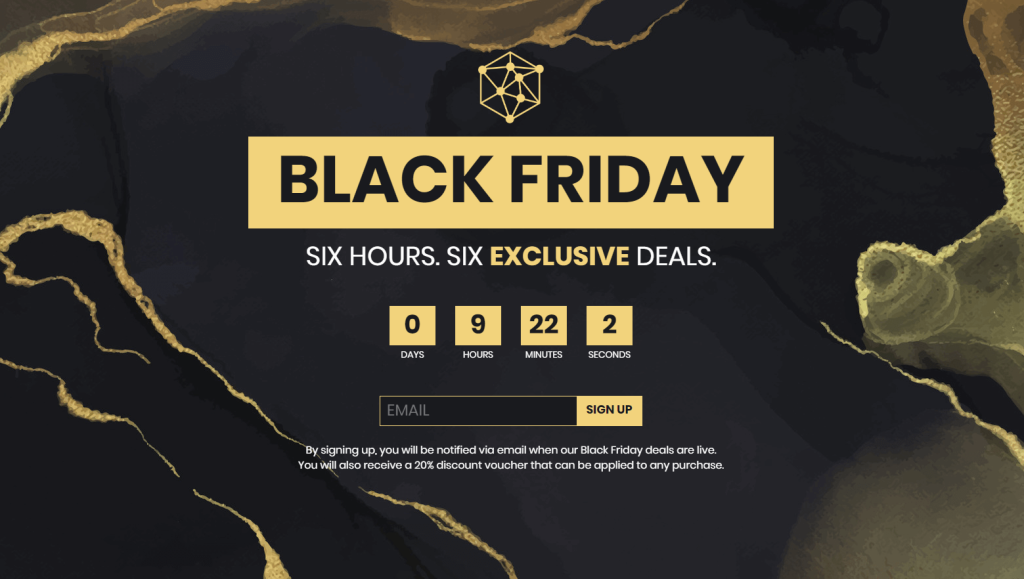
14. Christmas Campaigns → Interactive Advent Calendars
December is an important month for lots of businesses such as retailers, eCommerce companies, and so on. Many of these companies have lots of different promotions during December that they worked really hard on. That might include discounts, Marketing Games, greeting cards, and so on.
An idea could be to look at the promotion you have done in the following years and repurpose that content into an Interactive Advent Calendar. As explained in the name, an Interactive Advent Calendar is like a regular calendar but instead of finding small chocolates every day, your customers would find online promotions, discounts, gamified experiences, etc.
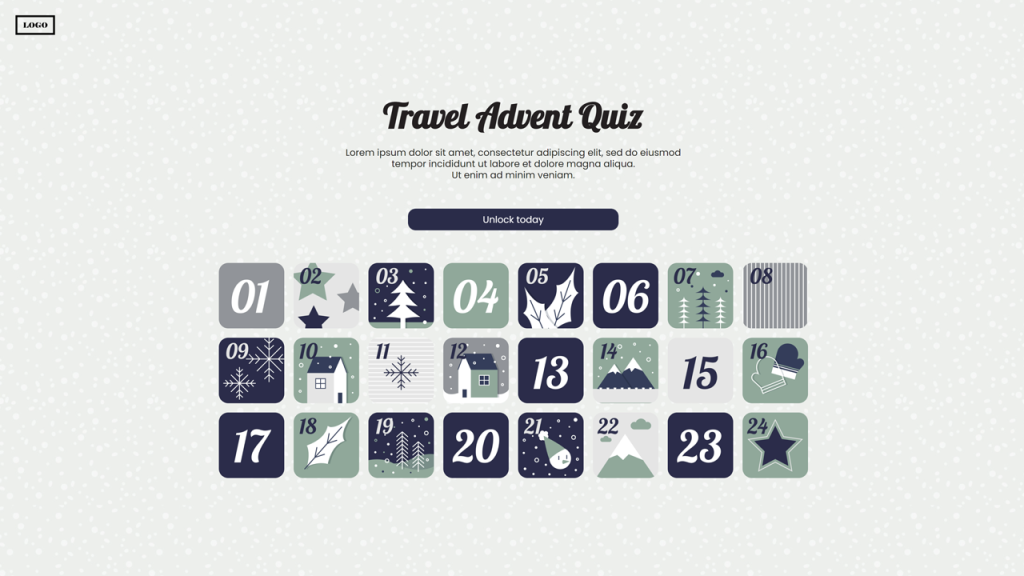
15. Online Coupons/Discounts -> Marketing Games
For simple online coupons and discounts, you could also repurpose the content of these into Marketing Games to make it more engaging and maybe collect leads at the same time. Win-win!
For example, last year, you gave a 25% discount by email to your best customers for Easter. This year, instead of simply giving them a code with 25%, you could create a small and fun Marketing game where participants could win a 25% discount.
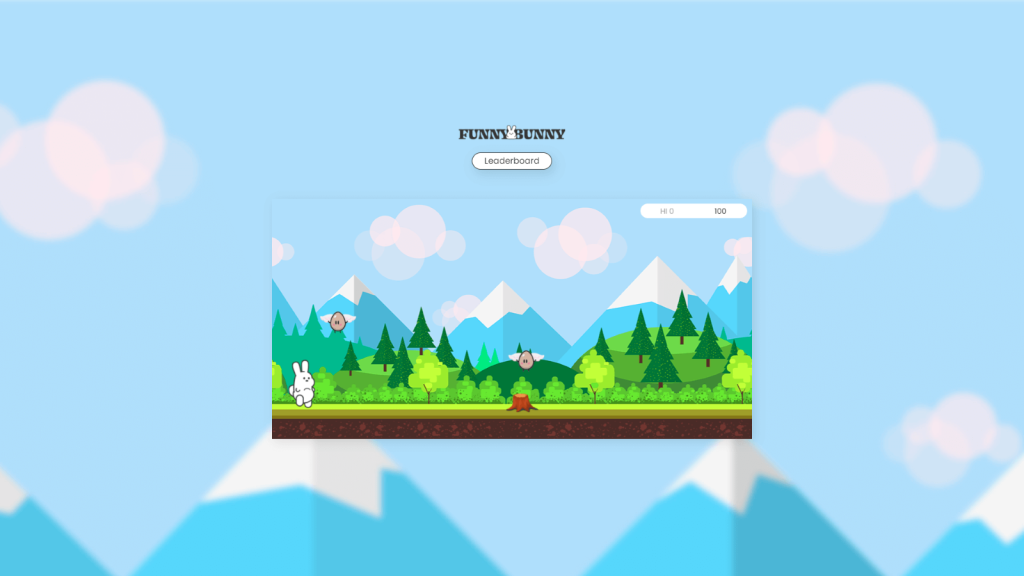
Repurpose Website Content
While we always think about repurposing obvious types of content such as blog posts, social media posts, videos and podcasts, we often forget about less obvious types of content. For example, it could be a great idea for you to repurpose website content into Interactive Experiences.
Sometimes, trying new ways of doing things on your website can be the thing you need to differentiate yourself from competitors.

“In the era of the internet, we’re currently in, websites mostly look the same. They have the same basic layout and functions, the same type of graphics, the same flows, the same information to gather, and the same sign-up forms and purchase flows. All of this is presented basically in the same way, every time.
Interactive Content has the potential to change that. It enables you to create custom dimensions for your website experience that will set your website and brand experience apart from the competition.”
Daniel Varny
Chief Marketing Officer at Dot.vu
16. Feature Pages → Subscription Finder
For example, if you have a quite complex product or service offering, you might have lots of feature pages where you describe packages and features. While they are very important, because they give valuable information about each package to potential buyers, they might also be somewhat confusing and make the whole buying process less straightforward.
So, instead of letting potential customers browse around the different packages by themselves, and getting lost while comparing them, you could use a Subscription Finder.
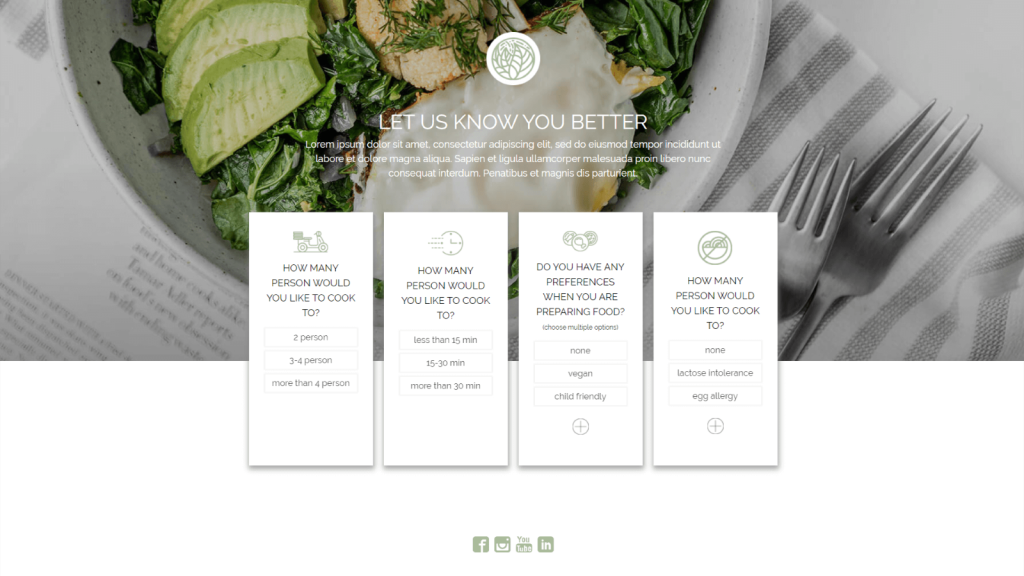
17. Company One-Pagers → Interactive Landing Page
A company one-pager is a single page that explains what your company does and for whom. It has the same utility as the elevator pitch but online. Creating company one-pagers has been quite popular lately and lots of businesses started doing it. Chances are you might have also done it but didn’t get much traction over it.
You could repurpose your Company One-Pager into an Interactive Landing Page to create a more memorable experience.
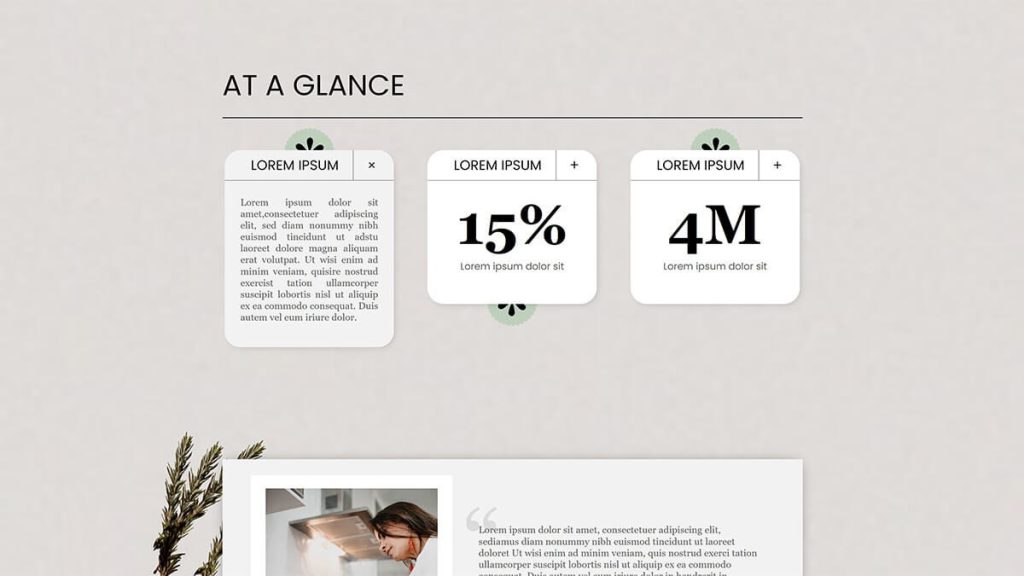
18. Product Categories → Product Recommenders
Most eCommerce websites rely on categories and filtering options to let customers find what they are looking for. For example, you are looking to buy a pair of black jeans. You go on some of your favorite shopping websites. You’ll go under categories and select men or women, then in a sub-category, you’ll select pants. Afterward, you can use the filtering options to select the type (jeans) and the color (black). Finally, you can browse and look into the different black jean options. On a well-designed website, that would still take you almost a minute. On a bad one, you won’t even be patient enough to get to the filtering options.
But, how could you repurpose your content here? Simple, you could have a Guided Selling experience instead of categories! Guided Selling is one of many types of Interactive Content in which website visitors answer a series of questions about their needs, preferences, and personal characteristics to be automatically guided towards the rights products, features, or sections of your website.
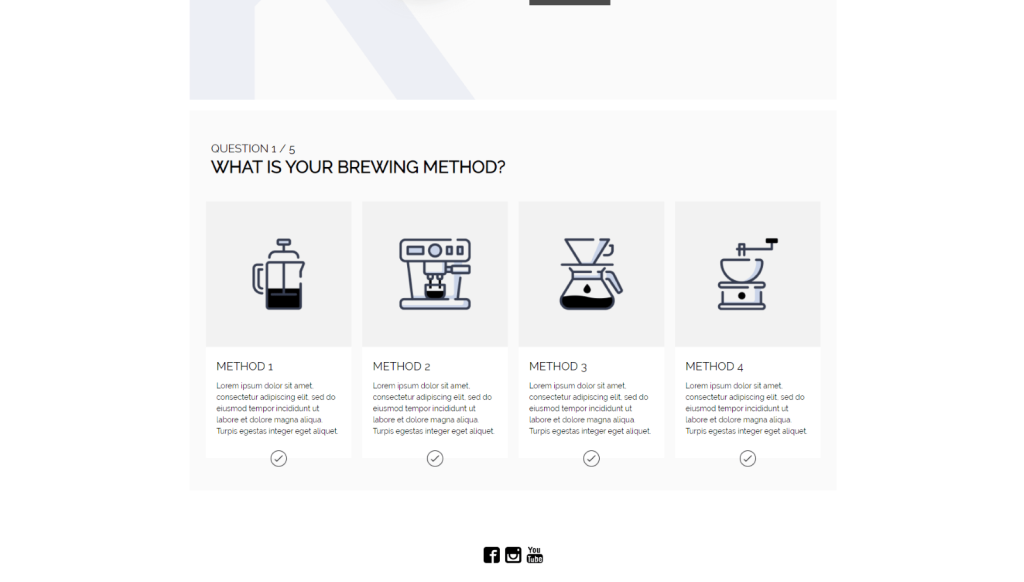
Repurpose PDFs content (Or Printed Content)
Finally, a common type of content that marketers work a lot on is PDFs, which include online magazines, eBooks, white papers, and so on. This is one of the best types of content to repurpose into Interactive Content because PDFs are so outdated.
There are many interactive elements and benefits you can get from repurposing PDF content into Interactive Experiences. One of the most outstanding benefits of Interactive Flipbooks, as opposed to static PDFs, is the possibility to collect zero- and first-party data. You can monitor the activity of your viewers, including the time spent browsing through the flipbook. You can also monitor the experiences they prefer to click on, and which pages are the most viewed ones. In addition, every answer to your polls and quizzes will give you a clear picture of your target consumer’s profile. Gathering customer insights will facilitate you in crafting even better content for your target audience.
19. E-Books & Whitepapers → Interactive eBooks
eBooks and Whitepapers are great forms of content used by companies to position themselves as experts within a field by educating their customers.
By repurposing your eBooks and whitepapers into Interactive eBooks, you can add many different interactive elements such as hotspots, dropdown menus, pop-ups, animations, quizzes, and polls. This will help you engage readers better and boost information retention.
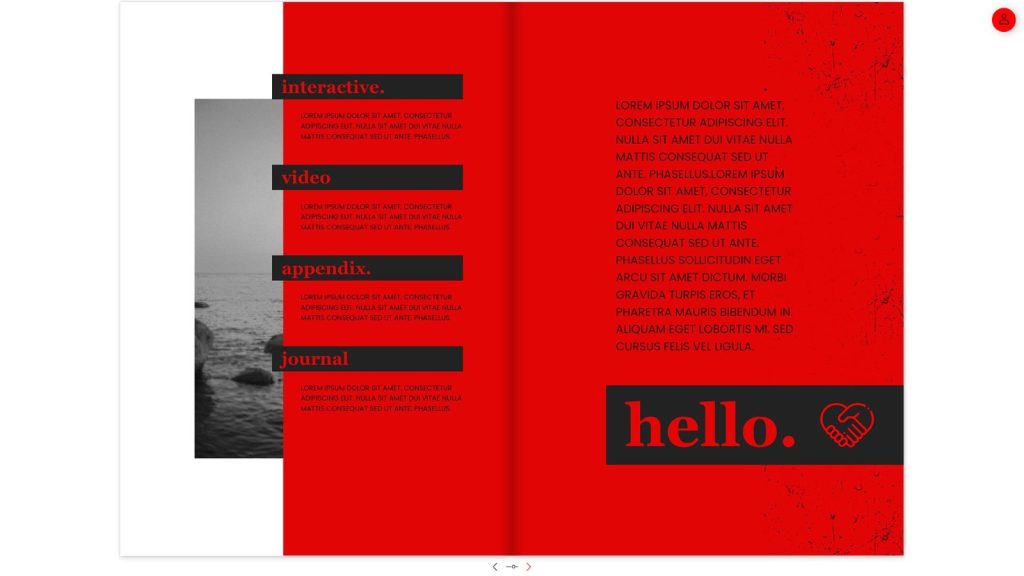
20. Product Catalog → Interactive Lookbooks
Say goodbye to your boring product catalogs that are inspired by the Sears Catalogs from the 80s and say hello to a whole new and exciting format: the Interactive Lookbooks.
Repurpose your Product Catalog into an engaging Interactive Lookbook. With an Interactive Lookbook, you can add as much interactivity as you want. Plus, don’t forget to also gamify your lookbook with Marketing Games where participants can win discounts and items.

Repurpose Content with Dot.vu
In this article, you learned about many different ways to repurpose content into Interactive Content. These are only examples and there are many more methods that you can use. However, keep in mind that the best way to repurpose content is to repurpose it into Interactive Content. Also, you must not forget to promote your Interactive Content to boost results.
To repurpose content into Interactive Content at scale, we strongly recommend using an Interactive Content platform. Dot.vu is the leading Interactive Content platform. Most of the examples you have seen in this blog post were ready-to-be customized templates available on Dot.vu/marketplace. If you want to get started, you can right away create a free account and start creating!


